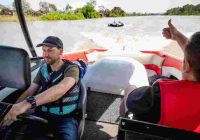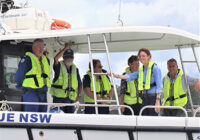News from Marine and Safety Tasmania
Winter
Now is the perfect time to contact a MAST Boat Safe partner near you to arrange servicing for your outboard or diesel engine. We often hear about people facing long waits approaching summer and Christmas to get their motors serviced. Why not be ready for next season now? At the same time, ask the Boat Safe partner to also inspect your trailer.
It’s also a good idea to go through all your safety equipment. Take it out, check what’s in date and see what needs replacing. Do your inflatables need servicing? Check them before storing them away for the winter. Ensure they are stored in a dry place to prevent material rotting and the CO2 bottle from rusting.
Another good practice is to inspect your anchor, chain and line. Check the shackles and ensure they are moused appropriately. Many larger boats mark their chain at 5 or 10-metre intervals with different colours, often red, white and blue every 10 metres, then repeated. This helps the person on the bow know exactly how much chain or line to let out relative to the water depth, especially on boats without a chain counter. Inspect the condition of your chain to ensure it is in good condition. If you only have rope, make sure it is still strong—you don’t want it failing next summer.
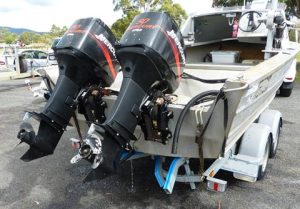
Retirement of MAST Staff Member – Ian Ross
We cannot let this opportunity go without thanking Ian for his invaluable contribution to boating safety, both in Tasmania and nationally. Ian has structured the school education program so that thousands of children in Tasmania, from grade 1 onwards, are now taught boating safety. This unique program is the envy of other state marine safety agencies.
Ian has fostered a successful relationship with the Department for Education, Children and Young People and their swimming and water safety coordinators around the state. Ian has also been closely involved in the national sphere with the re-drafting of the life jacket standard, AS4758 and developing the new standard for EVDS AS 2092 through Standards Australia.
In addition, Ian has been instrumental in several safety programs including playing a key role in the introduction of the Boatsafe Partner program. This has helped build a strong and trusted relationship with the marine industry. I am sure that the industry will join me in wishing Ian well in his future endeavours, which will no doubt see him spending time on the water as a Principal Race Officer for local sailing events and future National Championships.
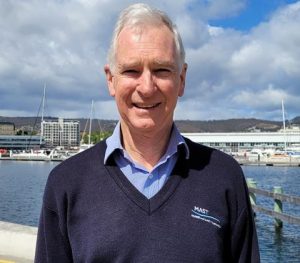
Infrastructure Projects
The facilities around the state continue to improve significantly. The transformation of Eddystone Point in the far northeast has been amazing, with MAST funding a new concrete walkway and water access. Parks and Wildlife Service, which owns and manages the facility, has upgraded the car park area.
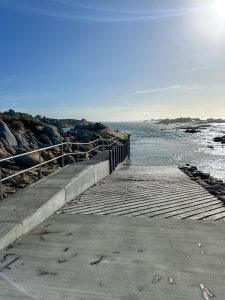
Eddystone Point
On the Northwest coast, a new, stepped concrete walkway is nearing completion in Burnie. This design, similar to the ones used by MAST at Rocky Cape and Stanley, allows for the rise and fall in tide along the north coast. Additionally, the Burnie City Council has upgraded the access to the ramp and carried out repairs to the adjacent popular fishing jetty. Another significant improvement is the enhancement of the ramp at Penguin for better use at low tide. Several years ago MAST met with local boaters to discuss improving the launching facilities there. As a result, funding was provided to repair and improve the high-tide ramp and to straighten the long low-tide access ramp.
At Coles Bay, the extension to Freemans Jetty is expected to be completed by mid-July. This will provide much-needed, additional berthing space and excellent shelter for the ramps and pontoon in westerly weather.
Further south at the Prosser River, repairs have been made to the geo-textile bag walls. The state Government initiated this project nearly 10 years ago to stabilise the river mouth. Over the past 30 years, three separate coastal engineering reports have advised the Council and Government that the Prosser River mouth would gradually migrate northwards, potentially endangering infrastructure such as the Tasman Highway adjacent to Raspins Beach.
Other major projects completed this financial year include the extension of the Pirates Bay walkway and the new ramp and walkway at Little Pine Lagoon in the highlands.
There are several major projects planned for the future. These include the replacement of the Sisters Beach walkway, maintenance work at Lewisham boat ramp, Geilston Bay boat ramp upgrade, the construction of a walkway for inland anglers at Lake Mackintosh and an extension of the popular Boomer Bay walkway. The funding for these projects has already been approved.
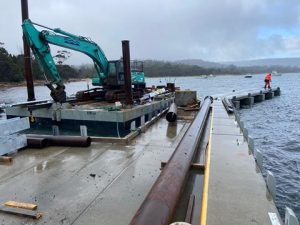
Coles Bay
Safety Update
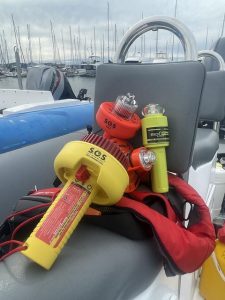
The proposed standard for EVDS is now out for public consultation until 16 August 2024.
If the consultation phase is successful, MAST expects the standard to be published either at the end of 2024 or early in 2025. A list of approved EVDS for use in Tasmania is available on the MAST website.
MAST has been advised by VicLab that many L150 and above life jackets have been tested to the new 2022 standard and should soon see these products become available on the shelves. The updated standard includes several changes that enhance safety and usability for the boating community.
Key changes include:
- A sewn-in crotch strap
- Double manual activation requiring unscrewing or removing the gas cartridge
- Consistent messaging on all brands regarding the fitting and use of the crotch strap for maximum performance
- A maximum 3-year servicing interval by an accredited service agent
- Testing with people wearing regular clothing instead of just swimwear
Overall, these improvements will result in a safer product for the boating community and MAST look forward to their availability soon.
Approved EVDS for use in Tasmania
Weather Buoy
The first of four Tarfish weather buoys is now operational. This will provide real-time weather information for those on the water or planning to go out.
It includes a wealth of real-time information such as wind speed and direction, swell height and direction, sea state and temperature. Additionally, it provides the barometer reading and indicates whether it is rising or falling, as well as information on the tide. This is a fantastic safety initiative.
The Tasmanian Giant Kelp Restoration Project – a unique partnership to save Tassie’s iconic underwater forests
Under the surface of Tasmania’s waters, Giant Kelp (Macrocystis pyrifera) once thrived.
These trees of the seas can reach over 40 metres tall and grow at a rapid rate of 50cm a day in the right conditions. Giant Kelp creates massive underwater forests, one of the most unique oceanic ecosystems, that many marine species rely on for survival. These forests provide habitat for commercially valuable species like lobsters, scale fish and abalone, improve local water quality, and buffer coastlines from erosion. Not to mention, diving in a healthy Giant Kelp forest is a spectacular experience!
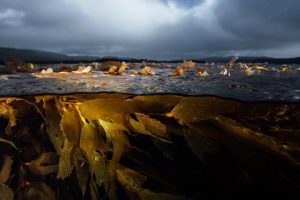
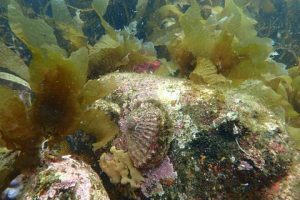
Unfortunately, Giant Kelp forests have been heavily impacted by increasingly frequent heatwaves. A strengthening East Australian Current, driving warm, nutrient-poor water further south, means that Giant Kelp is under stress and now competing against other more warm-tolerant and opportunistic seaweeds.
Overgrazing due to recent explosions in urchin populations has also dramatically reduced the extent of kelp forests at a global scale.
Unbeknown to most, Giant Kelp forests have slowly disappeared in Australia, declining by over 95% in Tasmania since the 1970s.
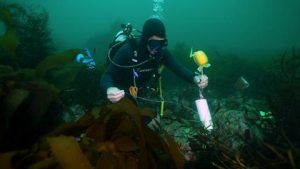
The Tasmanian Giant Kelp Restoration Project is a unique partnership between The Nature Conservancy, the Institute for Marine and Antarctic Studies (IMAS) at the University of Tasmania, NRM South, and CSIRO, who have teamed up to bring together the knowledge, experience and capacity of a wide range of partners and stakeholders, to expand the current Giant Kelp restoration efforts in Tasmania into ecologically relevant scales.
Specific reforestation sites along the east coast of Tasmania have been carefully chosen based on their suitability for kelp restoration. Juvenile Giant Kelps are grown in a facility at IMAS before being out-planted at these sites, which will help to assess the suitability of these sites for the larger-scale restoration work needed to make a real impact on the recovery of Giant Kelp forests in Tasmania.
“The Giant Kelp Restoration Project will benefit all Tasmanians, as well as visitors, by contributing to the recovery of one of the state’s most productive marine ecosystems that provides habitat for important reef species to thrive,” Paul Tompkins, TNC’s Kelp Restoration Coordinator in Tasmania, said.
How you can help
Boat operators have an important role to play in the protection and recovery of Giant Kelp:
- Make sure to keep an eye out for Giant Kelp on the surface of the water, and avoid driving boats directly through it whenever possible.
- Try to avoid anchoring directly in a Giant Kelp forest, or allowing anchor chain or rode to drag through a forest.
- Have you ever seen Giant Kelp? Please help MAST map historical and present-day kelp forests along the coasts of Tasmania and mainland Australia by recording your observations of the presence of Giant Kelp in Kelp Tracker.
- Learn more about the project and visit the Giant Kelp Restoration project page
- Watch the Kelp Chronicle videos here
The Tasmanian Giant Kelp Restoration Project is made possible by funding from Google.org, Perpetual Foundation, James Kirby Foundation and the J and M Wright Foundation.
This article was provided by Vanessa Billy, Communications Manager, The Nature Conservancy






